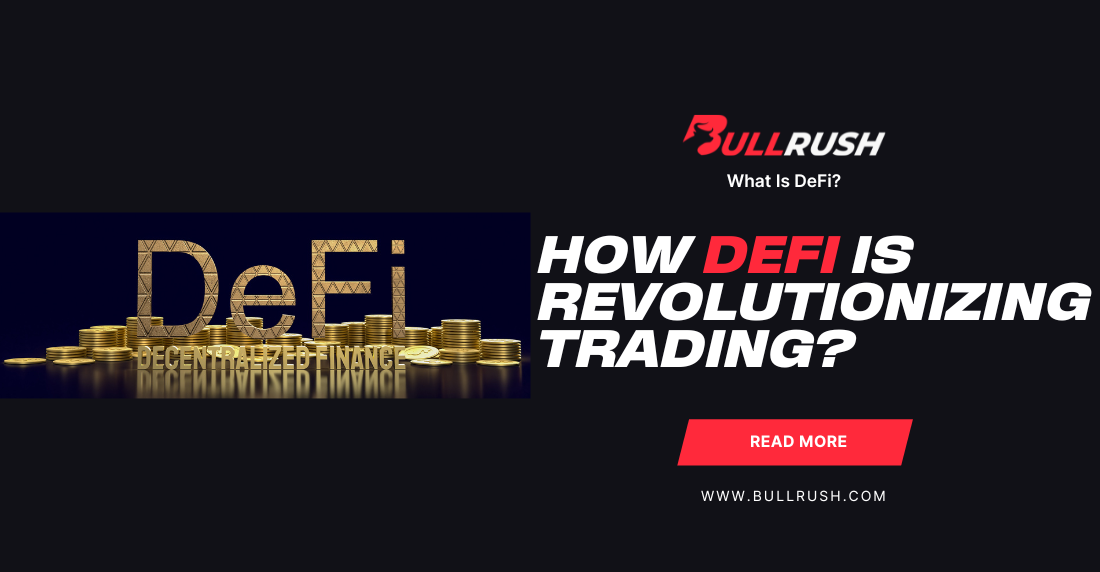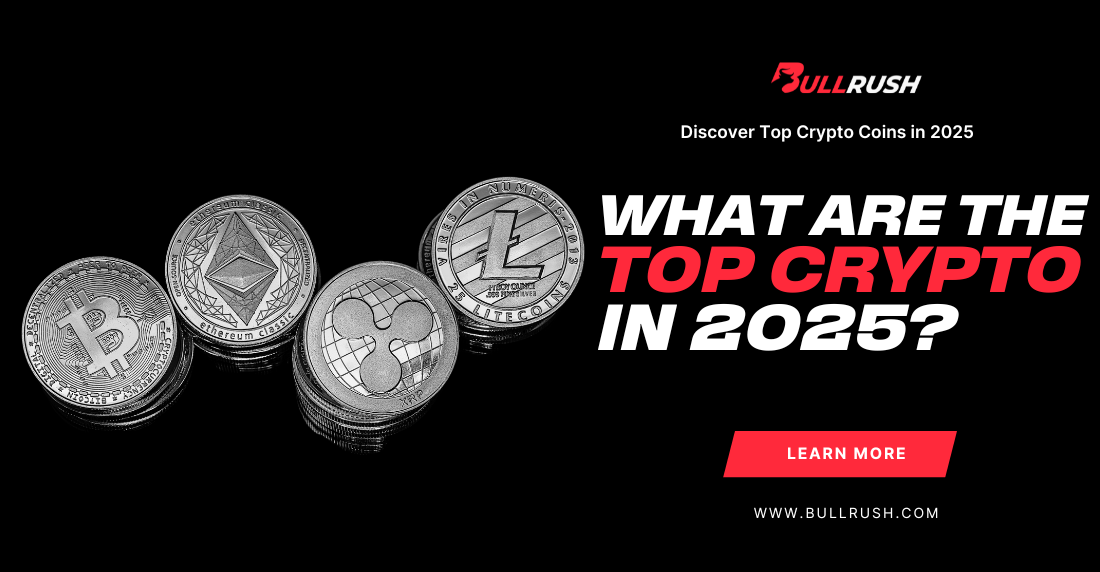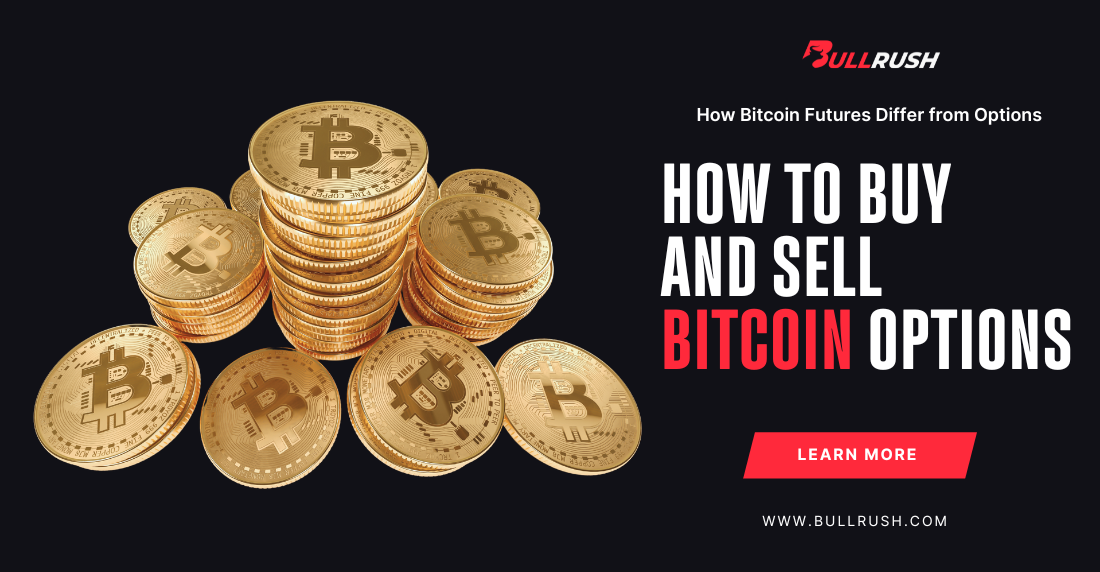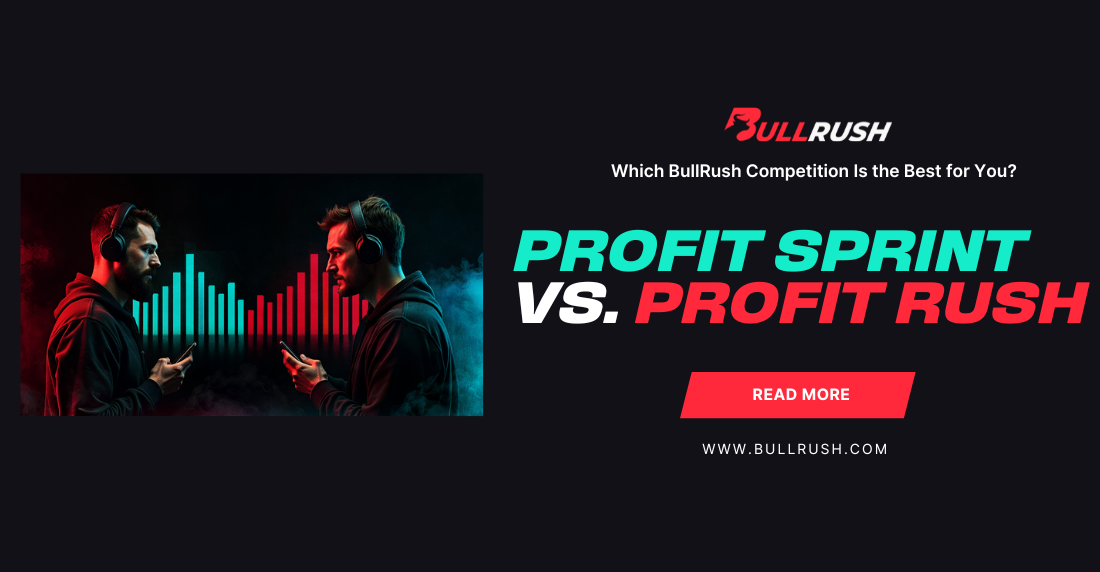
What Is DeFi? Core Components of DeFi
What if you could trade, lend, and earn, all without a bank, broker, or middleman? That’s exactly what DeFi makes possible.
DeFi (short for Decentralized Finance) is shaking up the trading world by replacing traditional systems with blockchain-based protocols. It’s fast, transparent, and always open. And if you’re a trader, it’s time to pay attention.
Today, we’re stepping into the world of DeFi: unpacking what it really means, how it functions behind the scenes, and why it’s turning traditional trading on its head. From decentralized exchanges where you can trade without middlemen, to liquidity pools that power instant swaps, to flash loans that let you borrow millions in seconds, we’ll explore the tools fueling this financial revolution. We’ll also look at the risks hiding in the code, and how platforms like BullRush are already giving traders a way to test DeFi strategies safely.
Curious where the future of trading is being built? Let’s dive in.
1. What Is DeFi? A New Era of Finance
Decentralized Finance (DeFi) refers to an ecosystem of financial applications built on blockchain networks, primarily Ethereum, that operate without traditional intermediaries. Every transaction, from lending to trading, is executed via smart contracts, automatically coded rules that run without human intervention.
For traders, this means more transparency, 24/7 access, and the ability to move assets globally with fewer barriers. No banks, no middlemen, just your crypto wallet and the blockchain.
Tip: Start small; use a trusted DeFi aggregator like 1inch or Zapper to experiment with swapping tokens or providing liquidity before diving deeper.
Key points:
- Built on smart contracts for trustless execution
- Open access with no gatekeepers
- Full transparency on-chain
2. Core Components: Trading, Lending, Liquidity Pools
Decentralized Finance isn’t just about token swaps. On-chain lending platforms like Aave and Compound allow you to earn yield by lending assets, or to borrow using collateral. Liquidity pools power decentralized exchanges (DEXes) like Uniswap and SushiSwap, enabling instant trades through shared asset pools.
These systems are interconnected. Lending markets need liquidity; DEXes need lenders; yield farming stitches it all together, offering yield incentives to liquidity providers.
Tip: When you supply assets to a liquidity pool, monitor impermanent loss and track your total yield over time.
Key points:
- Lending markets offer passive income
- Liquidity pools power swaps
- Yield farming incentivizes deeper participation
3. Why It Matters
DeFi unlocks unique opportunities: flash loans, automated market-making, yield arbitrage, and permissionless listing of trading pairs. This level of innovation isn’t available on centralized platforms.
More importantly, DeFi empowers traders to design and deploy complex trading strategies directly on-chain, including multi-step arbitrages and algorithmic strategies, all with minimal friction.
Tip: Learn how flash loans work, and practice strategies in demo tests or on BullRush’s platform, to assess if they fit your risk profile.
Key points:
- Enables creative, automated trading
- Access to global liquidity 24/7
- Bridges traditional and automated finance
4. Risks and Limitations You Should Know
It is not without risk: smart contract bugs, rug pulls, and high volatility can result in losses, and since there’s no central authority, no refunds. Regulatory uncertainty also looms.
On top of that, public blockchains impose transaction fees (like Ethereum’s gas costs), which can eat into profits during periods of congestion.
Tip: Before you invest in any DeFi protocol, review its audits (via sites like DeFi Safety), assess team credibility, and begin with amounts you can afford to risk.
Key points:
- Smart contract vulnerabilities are real
- No guarantee of refunds
- Watch out for gas fees and regulatory shifts
5. How DeFi Is Reshaping Trading Platforms
DeFi is pushing traditional platforms to rethink their models. We’re seeing hybrids emerge: centralized exchanges integrating DeFi services, and DEXs embracing better UX and institutional-grade tools.
Meanwhile, DeFi-native platforms are adding features like simulated trading, educational dashboards, and richly gamified environments, traits we already see on BullRush.
Tip: Use BullRush to apply new strategies in a safe, competitive setting.
Key points:
- CEX & DEX boundaries are blurring
- Simulated trading is becoming mainstream
- Education and gamification make it more accessible
6. Real-Life Use Cases for Traders
Traders use DeFi for arbitrage across DEXes, liquidity provision, yield aggregation, and even as collateral for higher-leverage strategies.
Some automate strategies via on-chain bots or decentralized smart order routers, capturing price inefficiencies faster than any human.
Tip: Start with simple trading strategies, such as providing liquidity in a stablecoin pool that offers reliable yield, then track your ROI.
Key points:
- Arbitrage between exchanges
- Yield farming in liquidity pools
- On-chain bots for execution automation
Where Decentralized Finance Takes Us Next
Decentralized Finance is far more than an abstract concept; it’s a fully functioning, permissionless, transparent financial system. For traders, it offers unmatched flexibility, innovation, and strategy design in ways centralized systems simply can’t match.
And here at BullRush, we’re already embedding DeFi thinking into our competitions, making it easier to practice, test, and master these strategies in a competitive but safe environment.
Take the plunge:
Compete in challenges, harness the power of simulation, hone your edge, and win real rewards. Whether you’re curious or ready to lead, BullRush trading competitions are the platform to sharpen your skills and claim your financial future.
FAQs
Q: Do I need real crypto to enter a DeFi challenge on BullRush?
No, you trade with fully funded demo trading accounts in BullRush competitions, safely.
Q: What should I study before joining?
Get comfortable with smart contracts, flash loans, liquidity pools, and impermanent loss. BullRush Academy is a great first step.
Q: How do you manage DeFi competition risk?
You can withdraw anytime, track P&L in real time, and exit positions at will; your balance resets at the end.
Q: Can I simulate yield farming strategies on BullRush?
Absolutely, you’ll find competitions focused on liquidity provision and yield aggregation across DeFi protocols.
Q: What are flash loans, and are they dangerous?
Flash loans let you borrow funds in a single transaction if returned instantly. They enable arbitrage, but if misused, they can backfire on gas costs and liquidation risk.
Q: How can I detect risky protocols?
Check audit reports (CertiK, OpenZeppelin), examine project GitHub activity, and review code on-chain. Always start with small deposits.



